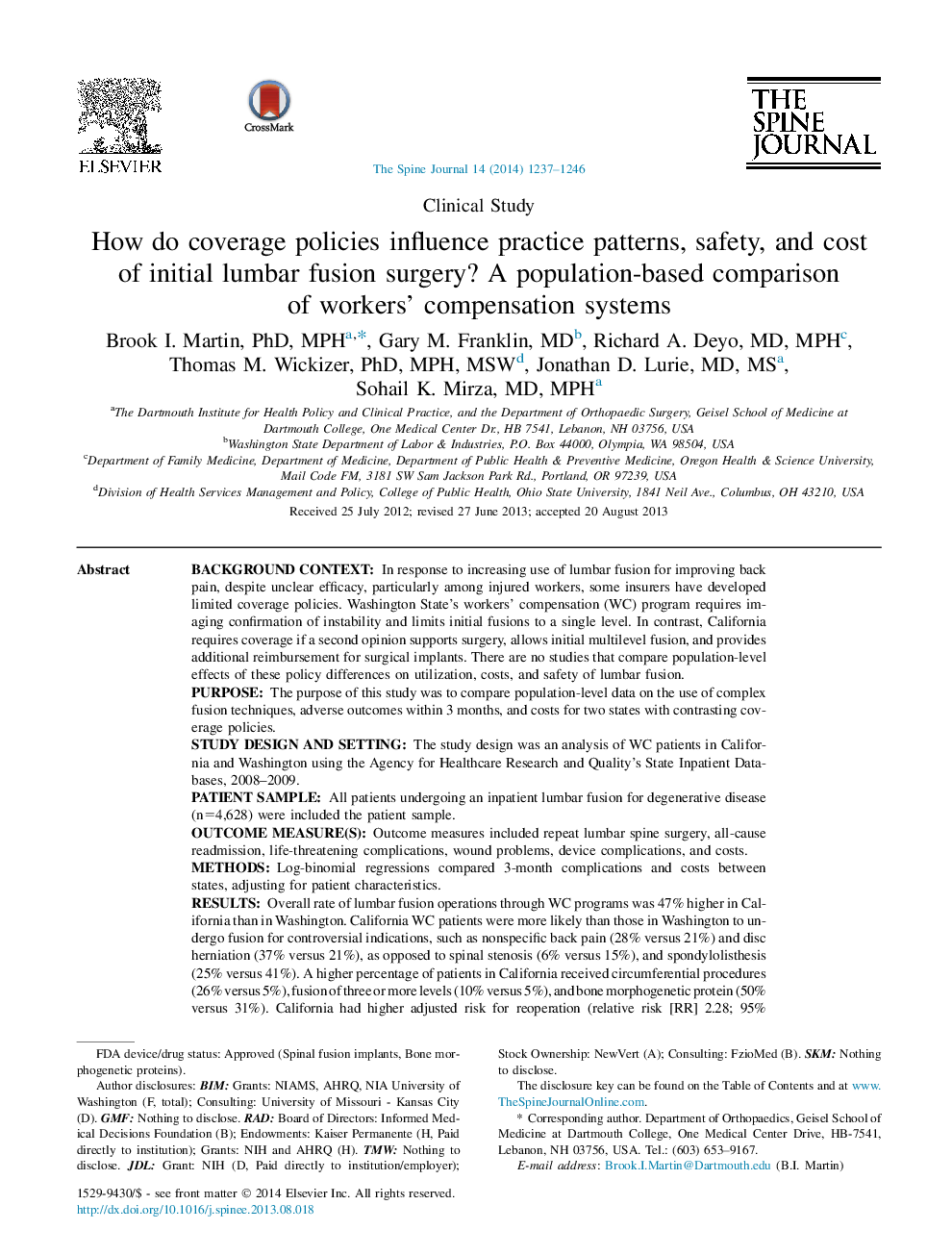| کد مقاله | کد نشریه | سال انتشار | مقاله انگلیسی | نسخه تمام متن |
|---|---|---|---|---|
| 6212376 | 1268577 | 2014 | 10 صفحه PDF | دانلود رایگان |
Background contextIn response to increasing use of lumbar fusion for improving back pain, despite unclear efficacy, particularly among injured workers, some insurers have developed limited coverage policies. Washington State's workers' compensation (WC) program requires imaging confirmation of instability and limits initial fusions to a single level. In contrast, California requires coverage if a second opinion supports surgery, allows initial multilevel fusion, and provides additional reimbursement for surgical implants. There are no studies that compare population-level effects of these policy differences on utilization, costs, and safety of lumbar fusion.PurposeThe purpose of this study was to compare population-level data on the use of complex fusion techniques, adverse outcomes within 3 months, and costs for two states with contrasting coverage policies.Study design and settingThe study design was an analysis of WC patients in California and Washington using the Agency for Healthcare Research and Quality's State Inpatient Databases, 2008-2009.Patient sampleAll patients undergoing an inpatient lumbar fusion for degenerative disease (n=4,628) were included the patient sample.Outcome measure(s)Outcome measures included repeat lumbar spine surgery, all-cause readmission, life-threatening complications, wound problems, device complications, and costs.MethodsLog-binomial regressions compared 3-month complications and costs between states, adjusting for patient characteristics.ResultsOverall rate of lumbar fusion operations through WC programs was 47% higher in California than in Washington. California WC patients were more likely than those in Washington to undergo fusion for controversial indications, such as nonspecific back pain (28% versus 21%) and disc herniation (37% versus 21%), as opposed to spinal stenosis (6% versus 15%), and spondylolisthesis (25% versus 41%). A higher percentage of patients in California received circumferential procedures (26% versus 5%), fusion of three or more levels (10% versus 5%), and bone morphogenetic protein (50% versus 31%). California had higher adjusted risk for reoperation (relative risk [RR] 2.28; 95% confidence interval [CI], 2.27-2.29), wound problems (RR 2.64; 95% CI, 2.62-2.65), device complications (RR 2.49; 95% CI, 2.38-2.61), and life-threatening complications (RR 1.31; 95% CI, 1.31-1.31). Hospital costs for the index procedure were greater in California ($49,430) than in Washington ($40,114).ConclusionsBroader lumbar fusion coverage policy was associated with greater use of lumbar fusion, use of more invasive operations, more reoperations, higher rates of complications, and greater inpatient costs.
Journal: The Spine Journal - Volume 14, Issue 7, 1 July 2014, Pages 1237-1246
